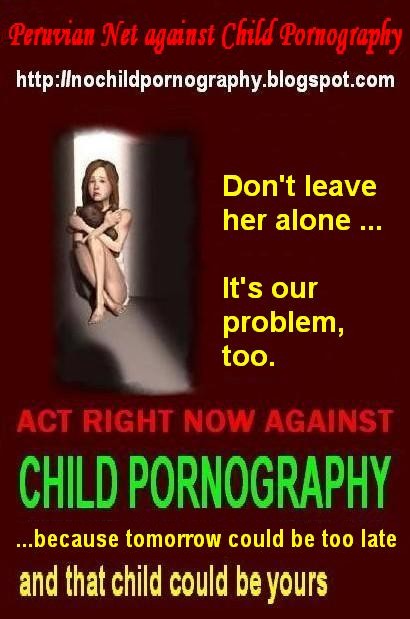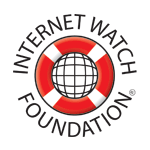State Department's trafficking in persons Report 2007
Burnma: Child Soldiers Ko Aung said: “I was recruited by force, against my will. One evening while we were watching a video show in my village, three army sergeants came. They checked whether we had identification cards and asked if we wanted to join the army. We explained that we were underage and hadn’t got identification cards. I said no and came back home that evening but an army recruitment unit arrived next morning at my village and demanded two new recruits. Those who could not pay 3000 kyats ($9) had to join the army, they said. My parents could not pay, and altogether 19 of us were recruited and sent to Mingladon [an army training centre].”
.
Purpose
.
 The Department of State is required by law to submit a Report each year to the U.S. Congress on foreign governments’ efforts to eliminate severe forms of trafficking in persons. This Report is the seventh annual TIP Report. It is intended to raise global awareness, to highlight efforts of the international community, and to encourage foreign governments to take effective actions to counter all forms of trafficking in persons.
The Department of State is required by law to submit a Report each year to the U.S. Congress on foreign governments’ efforts to eliminate severe forms of trafficking in persons. This Report is the seventh annual TIP Report. It is intended to raise global awareness, to highlight efforts of the international community, and to encourage foreign governments to take effective actions to counter all forms of trafficking in persons.The U.S. law that guides anti-human trafficking efforts, the Trafficking Victims Protection Act of 2000, as amended (TVPA), states that the purpose of combating human trafficking is to punish traffickers, to protect victims, and to prevent trafficking from occurring. Freeing those trapped in slave-like conditions is the ultimate goal of this Report—and of the U.S. government’s anti-human trafficking policy.
Human trafficking is a multi-dimensional threat. It deprives people of their human rights and freedoms, it increases global health risks, and it fuels the growth of organized crime.
Human trafficking has a devastating impact on individual victims, who often suffer physical and emotional abuse, rape, threats against self and family, document theft, and even death. But the impact of human trafficking goes beyond individual victims; it undermines the health, safety and security of all nations.
There is an ever-growing community of nations making significant efforts to eliminate this atrocious crime. A country that fails to make significant efforts to bring itself into compliance with the minimum standards for the elimination of trafficking in persons, as outlined in the TVPA, receives a “Tier 3” assessment in this Report. Such an assessment could trigger the withholding by the United States of non-humanitarian, non-trade-related foreign assistance. In assessing foreign governments’ efforts, the TIP Report highlights the “three P’s”—prosecution, protection, and prevention. But a victim-centered approach to trafficking requires us also to address the “three R’s”—rescue, rehabilitation, and reintegration—and to encourage learning and sharing of best practices in these areas.
This year is the 200th anniversary of the abolition of the transatlantic slave trade. The movement led by British parliamentarian William Wilberforce took decades to succeed. It required a nation to deepen and expand its definition of human dignity. It required a nation to declare that moral values outweigh commercial interests. Nothing less is required today of every nation taking up the contemporary challenge to eliminate human trafficking, a form of modern-day slavery.
Cambodia: Child Sex Trafficking Sisters Naren and Sitthy, ages 10 and 12 years, lived in Phnom Penh. Their parents agreed to deliver the young girls to a German national’s rented apartment for sex in exchange for money. While at the apartment, the German man sexually abused the girls and documented the abuse on video. Tipped off by a neighbor, the girls were rescued by a non-governmental organization. They testified against the man and their parents.
India: Forced Labor When Aakesh was five years old, he was playing with friends in his village when some men drove into his village and asked the boys if they wanted to see a “video.” The boys piled into the back of the vehicle and were driven 200 miles away. They were locked in a room for days without food and were beaten. The traffickers had abducted these vulnerable children so they could be forced to weave carpets. The boys were held captive for nine years. Two of Aakesh’s friends didn’t survive—one was shot while trying to escape and the other died from an untreated illness. The boys were 14 years old when they were rescued, barely able to speak. They were malnourished and wounded, but finally free.
.
The Scope and Nature of Modern-Day Slavery
.
The common denominator of trafficking scenarios is the use of force, fraud, or coercion to exploit a person for profit. A victim can be subjected to labor exploitation, sexual exploitation, or both. Labor exploitation includes slavery, forced labor, and debt bondage. Sexual exploitation typically includes abuse within the commercial sex industry. In other cases, victims are exploited in private homes by individuals who often demand sex as well as work. The use of force or coercion can be direct and violent or psychological.
A wide range of estimates exists on the scope and magnitude of modern-day slavery. The International Labor Organization (ILO )—the United Nations agency charged with addressing labor standards, employment, and social protection issues—estimates there are 12.3 million people in forced labor, bonded labor, forced child labor, and sexual servitude at any given time; other estimates range from 4 million to 27 million.
Annually, according to U.S. Government-sponsored research completed in 2006, approximately 800,000 people are trafficked across national borders, which does not include millions trafficked within their own countries. Approximately 80 percent of transnational victims are women and girls and up to 50 percent are minors. The majority of transnational victims are females trafficked into commercial sexual exploitation. These numbers do not include millions of female and male victims around the world who are trafficked within their own national borders—the majority for forced or bonded labor.
Human traffickers prey on the vulnerable. Their targets are often children and young women, and their ploys are creative and ruthless, designed to trick, coerce, and win the confidence of potential victims. Very often these ruses involve promises of a better life through marriage, employment, or educational opportunities.
The nationalities of trafficked people are as diverse as the world’s cultures. Some leave developing countries, seeking to improve their lives through low-skilled jobs in more prosperous countries. Others fall victim to forced or bonded labor in their own countries. Women eager for a better future are susceptible to promises of jobs abroad as babysitters, housekeepers, waitresses, or models—jobs that traffickers turn into the nightmare of prostitution without exit. Some families give children to adults, often relatives, who promise education and opportunity—but sell the children into exploitative situations instead.
A wide range of estimates exists on the scope and magnitude of modern-day slavery. The International Labor Organization (ILO )—the United Nations agency charged with addressing labor standards, employment, and social protection issues—estimates there are 12.3 million people in forced labor, bonded labor, forced child labor, and sexual servitude at any given time; other estimates range from 4 million to 27 million.
Annually, according to U.S. Government-sponsored research completed in 2006, approximately 800,000 people are trafficked across national borders, which does not include millions trafficked within their own countries. Approximately 80 percent of transnational victims are women and girls and up to 50 percent are minors. The majority of transnational victims are females trafficked into commercial sexual exploitation. These numbers do not include millions of female and male victims around the world who are trafficked within their own national borders—the majority for forced or bonded labor.
Human traffickers prey on the vulnerable. Their targets are often children and young women, and their ploys are creative and ruthless, designed to trick, coerce, and win the confidence of potential victims. Very often these ruses involve promises of a better life through marriage, employment, or educational opportunities.
The nationalities of trafficked people are as diverse as the world’s cultures. Some leave developing countries, seeking to improve their lives through low-skilled jobs in more prosperous countries. Others fall victim to forced or bonded labor in their own countries. Women eager for a better future are susceptible to promises of jobs abroad as babysitters, housekeepers, waitresses, or models—jobs that traffickers turn into the nightmare of prostitution without exit. Some families give children to adults, often relatives, who promise education and opportunity—but sell the children into exploitative situations instead.
.
Focus of the 2007 TIP Report
.
The TIP Report is the most comprehensive worldwide report on the efforts of governments to combat severe forms of trafficking in persons. This Report covers the period April 2006 through March 2007. It includes those countries that have been determined to be countries of origin, transit, or destination for a significant number of victims of severe forms of trafficking. The 2007 TIP Report represents an updated, global look at the nature and scope of modern-day slavery and the broad range of actions being taken by governments around the world to confront and eliminate it.
Because trafficking likely extends to every country in the world, the omission of a country from the Report may only indicate a lack of adequate information. The country narratives describe the scope and nature of the trafficking problem, the reasons for including the country, and the government’s efforts to combat trafficking. Each narrative also contains an assessment of the government’s compliance with the minimum standards for the elimination of trafficking as laid out in the TVPA, and includes suggestions for additional actions to combat trafficking. The remainder of the country narrative describes each government’s efforts to enforce laws against trafficking, protect victims, and prevent trafficking. Each narrative explains the basis for rating a country as Tier 1, Tier 2, Tier 2 Watch List, or Tier 3. If a country has been placed on Tier 2 Watch List, the narrative will contain a statement of explanation, using the criteria found in the TVPA.
The TVPA lists three factors to be considered in determining whether a country should be in Tier 2 (or Tier 2 Watch List) or in Tier 3: 1) The extent to which the country is a country of origin, transit or destination for severe forms of trafficking; 2) The extent to which the government of the country does not comply with the TVPA’s minimum standards including, in particular, the extent of the government’s trafficking-related corruption; and 3) The resources and capabilities of the government to address and eliminate severe forms of trafficking in persons.
Some countries have held conferences and established task forces or national action plans to create goals for anti-trafficking efforts. However, conferences, plans, and task forces alone are not weighed heavily in assessing country efforts. Rather, the Report focuses on concrete actions governments have taken to fight trafficking, especially prosecutions, convictions, and prison sentences for traffickers, victim protection measures, and prevention efforts. The Report does not give great weight to laws in draft form or laws that have not yet been enacted. Finally, the Report does not focus on government efforts that contribute indirectly to reducing trafficking, such as education programs, support for economic development, or programs aimed at enhancing gender equality, although these are worthwhile endeavors.
Rwanda/United Kingdom: Sex Trafficking When she was 14, Adnita’s boss, a trader for whom she worked in the Kigali market, told her to go with two men. He said they would take her to live abroad where she would be safe and go to school. When she reached Great Britain, a man picked her up from the airport and took her to a house. Another man came to the house and raped her. For two years, the teenager was forced to live in a locked kitchen with access only to a toilet and basin. The men kept her as a sex slave until she escaped and flagged down a driver, who took her to the police.
Because trafficking likely extends to every country in the world, the omission of a country from the Report may only indicate a lack of adequate information. The country narratives describe the scope and nature of the trafficking problem, the reasons for including the country, and the government’s efforts to combat trafficking. Each narrative also contains an assessment of the government’s compliance with the minimum standards for the elimination of trafficking as laid out in the TVPA, and includes suggestions for additional actions to combat trafficking. The remainder of the country narrative describes each government’s efforts to enforce laws against trafficking, protect victims, and prevent trafficking. Each narrative explains the basis for rating a country as Tier 1, Tier 2, Tier 2 Watch List, or Tier 3. If a country has been placed on Tier 2 Watch List, the narrative will contain a statement of explanation, using the criteria found in the TVPA.
The TVPA lists three factors to be considered in determining whether a country should be in Tier 2 (or Tier 2 Watch List) or in Tier 3: 1) The extent to which the country is a country of origin, transit or destination for severe forms of trafficking; 2) The extent to which the government of the country does not comply with the TVPA’s minimum standards including, in particular, the extent of the government’s trafficking-related corruption; and 3) The resources and capabilities of the government to address and eliminate severe forms of trafficking in persons.
Some countries have held conferences and established task forces or national action plans to create goals for anti-trafficking efforts. However, conferences, plans, and task forces alone are not weighed heavily in assessing country efforts. Rather, the Report focuses on concrete actions governments have taken to fight trafficking, especially prosecutions, convictions, and prison sentences for traffickers, victim protection measures, and prevention efforts. The Report does not give great weight to laws in draft form or laws that have not yet been enacted. Finally, the Report does not focus on government efforts that contribute indirectly to reducing trafficking, such as education programs, support for economic development, or programs aimed at enhancing gender equality, although these are worthwhile endeavors.
Rwanda/United Kingdom: Sex Trafficking When she was 14, Adnita’s boss, a trader for whom she worked in the Kigali market, told her to go with two men. He said they would take her to live abroad where she would be safe and go to school. When she reached Great Britain, a man picked her up from the airport and took her to a house. Another man came to the house and raped her. For two years, the teenager was forced to live in a locked kitchen with access only to a toilet and basin. The men kept her as a sex slave until she escaped and flagged down a driver, who took her to the police.
.
Methodology
.
The Department of State prepared this Report using information from U.S. embassies, foreign government officials, NGOs and international organizations, published reports, research trips to every region, and information submitted to tipreport@state.gov. This email address was established for NGOs and individuals to share information on government progress in addressing trafficking. U.S. diplomatic posts reported on the trafficking situation and governmental action based on thorough research, including meetings with a wide variety of government officials, local and international NGO representatives, officials of international organizations, journalists, academics, and survivors.
To compile this year’s Report, the Department took a fresh look at information sources on every country to make its assessments. Assessing each government’s anti-trafficking efforts involves a two-step process:
To compile this year’s Report, the Department took a fresh look at information sources on every country to make its assessments. Assessing each government’s anti-trafficking efforts involves a two-step process:
.
Step One: Finding Significant Numbers of Victims
.
First, the Department determines whether a country is “a country of origin, transit, or destination for a significant number of victims of severe forms of trafficking,” generally on the order of 100 or more victims, the same threshold applied in previous reports. Some countries, for which such information was not available, are not given tier ratings, but are included in the Special Case section because they exhibited indications of trafficking.
.
Step Two: Tier Placement
.
The Department places each country included on the 2007 TIP Report into one of the three lists, described here as tiers, mandated by the TVPA. This placement is based more on the extent of government action to combat trafficking, rather than the size of the problem, important though that is. The Department first evaluates whether the government fully complies with the TVPA’s minimum standards for the elimination of trafficking (detailed on pp. 228-229). Governments that do fully comply are placed in Tier 1. For other governments, the Department considers whether they are making significant efforts to bring themselves into compliance. Governments that are making significant efforts to meet the minimum standards are placed in Tier 2. Governments that do not fully comply with the minimum standards and are not making significant efforts to do so are placed in Tier 3. Finally, the Special Watch List criteria are considered and, when applicable, Tier 2 countries are placed on the Tier 2 Watch List.
.
The Special Watch List—Tier 2 Watch List
.
The TVPA created a “Special Watch List” of countries on the TIP Report that should receive special scrutiny. The list is composed of: 1) Countries listed as Tier 1 in the current Report that were listed as Tier 2 in the 2006 Report; 2) Countries listed as Tier 2 in the current Report that were listed as Tier 3 in the 2006 Report; and, 3) Countries listed as Tier 2 in the current Report, where:
a) The absolute number of victims of severe forms of trafficking is very significant or is significantly increasing;
b) There is a failure to provide evidence of increasing efforts to combat severe forms of trafficking in persons from the previous year, including increased investigations, prosecutions, and convictions of trafficking crimes, increased assistance to victims, and decreasing evidence of complicity in severe forms of trafficking by government officials; or
c) The determination that a country is making significant efforts to bring itself into compliance with the minimum standards was based on commitments by the country to take additional future steps over the next year.
This third category (including a, b, and c) has been termed by the Department of State “Tier 2 Watch List.” There were 32 countries placed on Tier 2 Watch List in the June 2006 Report. Along with two countries that were reassessed as Tier 2 Watch List countries in September 2006 and five countries that met the first two categories above (moving up a tier from the 2005 to the 2006 TIP Report), these 39 countries were included in an “Interim Assessment” released by the Department of State on February 1, 2007.
Of the 34 countries on Tier 2 Watch List at the time of the Interim Assessment, 10 moved up to Tier 2 on this Report, while 7 fell to Tier 3 and 17 remain on Tier 2 Watch List. Countries placed on the Special Watch List in this Report will be reexamined in an interim assessment to be submitted to the U.S. Congress by February 1, 2008.
.
Potential Penalties for Tier 3 Countries
.
Governments of countries in Tier 3 may be subject to certain sanctions. The U.S. Government may withhold non-humanitarian, non-trade-related foreign assistance. Countries that receive no such assistance would be subject to withholding of funding for participation by officials and employees of such governments in educational and cultural exchange programs. Consistent with the TVPA, governments subject to sanctions would also face U.S. opposition to assistance (except for humanitarian, trade-related, and certain development-related assistance) from international financial institutions such as the International Monetary Fund and the World Bank. Sanctions, if imposed, will take effect October 1, 2007.
All or part of the TVPA’s sanctions can be waived upon a determination by the President that the provision of such assistance to the government would promote the purposes of the statute or is otherwise in the national interest of the United States. The TVPA also provides that sanctions can be waived if necessary to avoid significant adverse effects on vulnerable populations, including women and children. Sanctions would not apply if the President finds that, after this Report is issued but before sanctions determinations are made, a government has come into compliance with the minimum standards or is making significant efforts to bring itself into compliance.
Regardless of tier placement, every country can do more, including the United States. No country placement is permanent. All countries must maintain and increase efforts to combat trafficking.
All or part of the TVPA’s sanctions can be waived upon a determination by the President that the provision of such assistance to the government would promote the purposes of the statute or is otherwise in the national interest of the United States. The TVPA also provides that sanctions can be waived if necessary to avoid significant adverse effects on vulnerable populations, including women and children. Sanctions would not apply if the President finds that, after this Report is issued but before sanctions determinations are made, a government has come into compliance with the minimum standards or is making significant efforts to bring itself into compliance.
Regardless of tier placement, every country can do more, including the United States. No country placement is permanent. All countries must maintain and increase efforts to combat trafficking.
.
How the Report Is Used?
.
This Report is a diplomatic tool for the U.S. government to use as an instrument for continued dialogue and encouragement and as a guide to help focus resources on prosecution, protection, and prevention programs and policies. The State Department will continue to engage governments about the content of the Report in order to strengthen cooperative efforts to eradicate trafficking. In the coming year, and particularly in the months before a determination is made regarding sanctions for Tier 3 countries, the Department will use the information gathered here to more effectively target assistance programs and to work with countries that need help in combating trafficking. The Department hopes the Report will be a catalyst for government and non-government efforts to combat trafficking in persons around the world.
North Korea/China: Forced Marriage Hanuel said: “I was sold to be the wife of a 47-year-old Chinese man who has no work skills and was very ill. My husband would hit me and say: ‘You, do you have any idea how much I paid for you?’ I am not the only North Korean woman in this area. As I was talking to some of the others, we came to realize that we have been sold into this kind of marriage.”
Nigeria/United States: 14-year-old Jenny left her native Nigeria for the United States to work in the home of a couple, also originally from an African country. She thought she would be paid to look after their children, but the reality was very different. For five years Jenny was repeatedly raped by her employer and his wife physically assaulted her, sometimes with a cane, and on one occasion with a high-heeled shoe. Tipped off by a local NGO, law enforcement officials rescued Jenny and prosecuted the perpetrators.
North Korea/China: Forced Marriage Hanuel said: “I was sold to be the wife of a 47-year-old Chinese man who has no work skills and was very ill. My husband would hit me and say: ‘You, do you have any idea how much I paid for you?’ I am not the only North Korean woman in this area. As I was talking to some of the others, we came to realize that we have been sold into this kind of marriage.”
Nigeria/United States: 14-year-old Jenny left her native Nigeria for the United States to work in the home of a couple, also originally from an African country. She thought she would be paid to look after their children, but the reality was very different. For five years Jenny was repeatedly raped by her employer and his wife physically assaulted her, sometimes with a cane, and on one occasion with a high-heeled shoe. Tipped off by a local NGO, law enforcement officials rescued Jenny and prosecuted the perpetrators.
.
“Trafficking in Persons” Defined
.
The Trafficking Victims Protection Act defines “severe forms of trafficking in persons” as:
(a) sex trafficking in which a commercial sex act is induced by force, fraud, or coercion, or in which the person is induced to perform such an act has not attained 18 years of age; or
(b) the recruitment, harboring, transportation, provision, or obtaining of a person for labor or services, through the use of force, fraud, or coercion for the purpose of subjection to involuntary servitude, peonage, debt bondage or slavery.
A victim need not be physically transported from one location to another in order for the crime to fall within these definitions.
.
Definition of Terms
- Sex trafficking means the recruitment, harboring, transportation, provision, or obtaining of a person for the purpose of a commercial sex act.
- Commercial sex act means any sex act on account of which anything of value is given to or received by any person.
- Coercion means (a) threats of serious harm to or physical restraint against any person; (b) any scheme, plan or pattern intended to cause a person to believe that failure to perform an act would result in serious harm to or physical restraint against any person; or, (c) the abuse or threatened abuse of the legal process.
- Involuntary servitude includes a condition of servitude induced by means of (a) any scheme, plan, or pattern intended to cause a person to believe that, if that person did not enter into or continue in such condition, that person or another person would suffer serious harm or physical restraint; or (b) the abuse or threatened abuse of the legal process.














































0 Comments:
Post a Comment
Subscribe to Post Comments [Atom]
<< Home